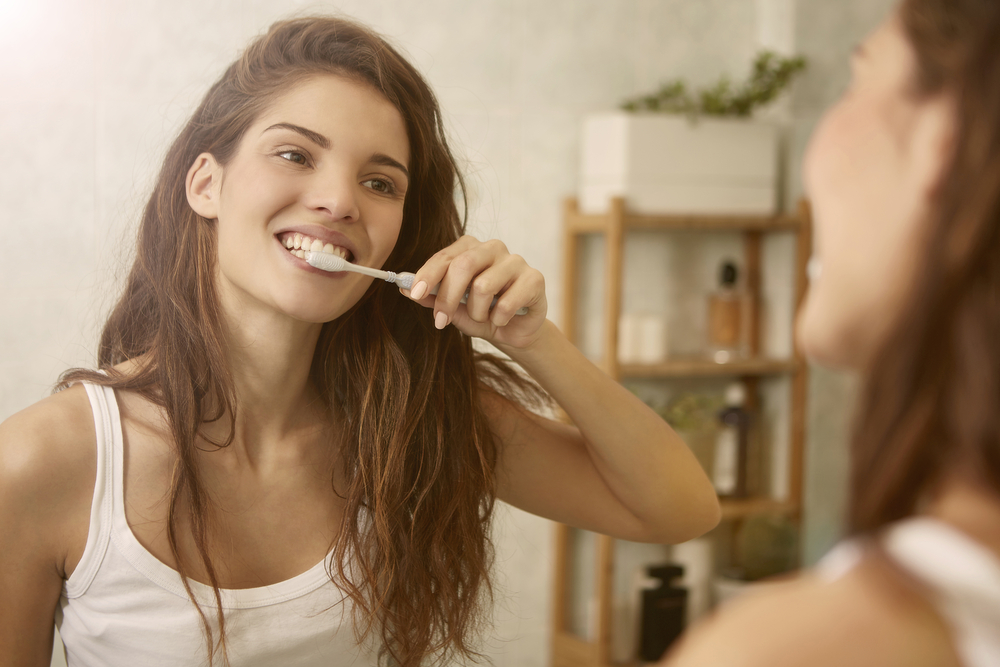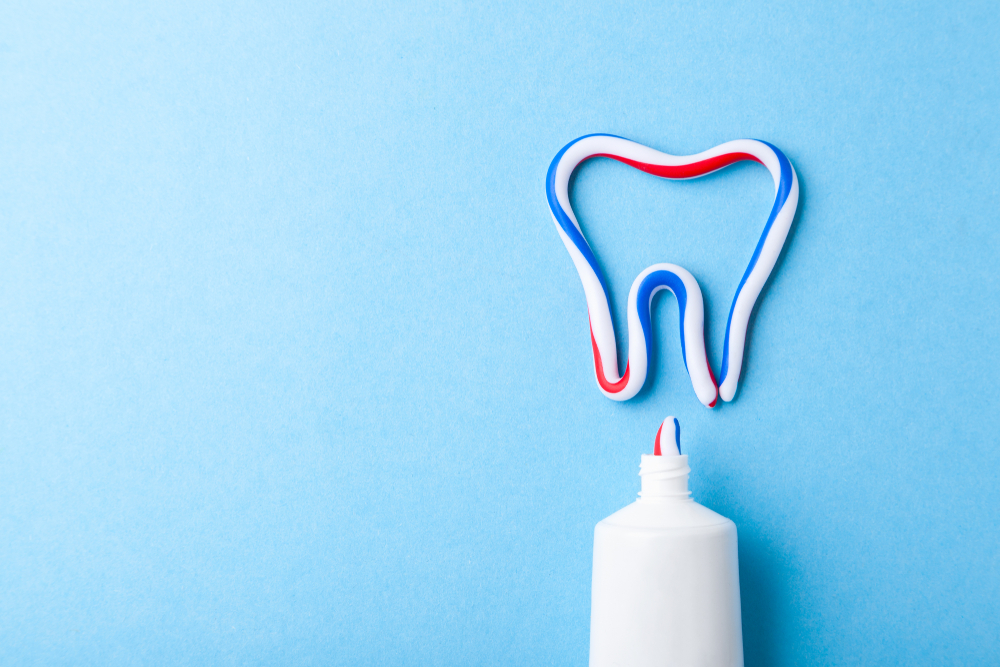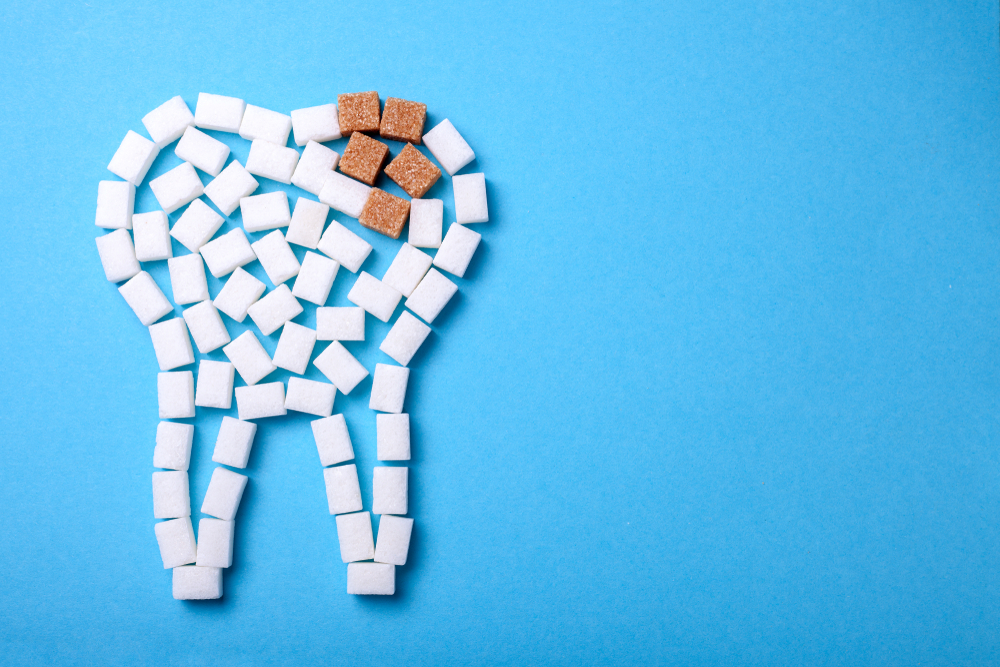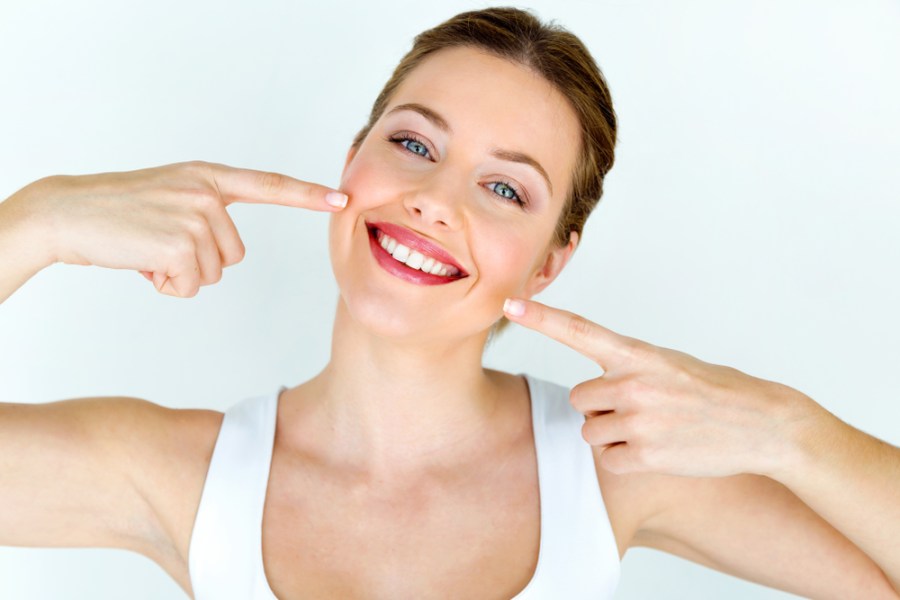Puckering up with your partner is a great way to lower your stress levels and get a wellbeing boost, because kissing, like cuddling, causes the release of your body’s natural endorphins, such as the feelgood hormone oxytocin. If you’re hoping for a few extra kisses this Valentine’s Day, then fresh breath and a healthy smile should be high on your list. And aside from bringing some romance to your week, paying a little extra attention to your teeth and gums now is a good investment for your future health.
If you’re one of the 26 per cent of women in the UK who only brushes her teeth once a day (according to
a YouGov survey) it’s time to take things up a notch. While you might have been able to get away with being slightly lax with your oral hygiene in the past, from your 40s onwards looking after your teeth becomes
all the more important.
Hormonal fluctuations that take place as you head toward the menopause can make you more susceptible to problems with your teeth and gums.
‘As your oestrogen levels decrease, your body’s surfaces, including your mouth, become drier,’ says Professor Nairn Wilson, spokesperson for the British Dental Association. ‘When your mouth is dry, you may have an increased risk of tooth decay (dental caries) and gum (periodontal) disease.’
Saliva helps to protect your teeth and gums. It contains important elements such as bicarbonate, calcium, and phosphate, which help to neutralise plaque acids and repair early tooth damage and decay. Drinking plenty of water – at least two litres a day – could help to combat a dry mouth, but making sure you take better care of your teeth will also help to minimise the damage.
How to brush your teeth correctly
‘Brushing your teeth thoroughly twice a day is one of the best things you can do for your oral health,’ says Elaine Tilling, clinical head of education at inderdental brush company TePe. Yet 28 per cent of us don’t take the time to brush our teeth for the recommend two minutes according to research by BUPA.
If you don’t brush properly, plaque can build up along your gum line and between your teeth, feeding on the bits of food left behind in your mouth. This could lead to your gums becoming inflamed, swollen and even infected, which in turn could cause tooth decay and gum disease.
Do I need an electric toothbrush?
An electric toothbrush will help you do a more thorough job, but it’s important to clean between your teeth too. ‘Interdental brushes are better for cleaning the spaces between your teeth than floss, except where the space is too tight to insert a brush,’ says Professor Wilson.

You might be used to rinsing your mouth after brushing, but that is now a big no-no. ‘Rinsing washes away the fluoride from your toothpaste and you need that fluoride in contact with your teeth for as long as possible to make them more resistant to decay,’ says Professor Wilson. Skip mouth wash altogether or only use it to freshen your breath during the day, rather than after brushing, because it too can rinse away the protective effects of fluoride.
How can I reduce plaque?
Between check-ups with your dentist you can police how well you’re looking after your teeth and controlling your levels of plaque with disclosing tablets (buy them from your pharmacist).
‘Clean your teeth as usual then chew up a disclosing tablet, lick the dye around your teeth, have a quick rinse out to remove the excess dye and then get up close to the bathroom mirror and see what you regularly leave on your teeth,’ says Elaine.
‘The dye will have stained the plaque that you have left behind.’ It’s a great way to see which areas of your mouth you’re missing so you know where to direct your attention with brushing and flossing.

What to eat for healthy teeth
Your teeth come into contact with everything you eat and drink and a healthy, balanced diet with at least five portions of fruit and vegetables, some healthy fats from oily fish and olive oil, lean proteins and wholegrains shouldn’t harm your teeth if you’re brushing regularly.
Keep your calcium levels topped up by including plenty of green leafy vegetables, natural yogurt, chia seeds and tinned fish with bones in such as sardines. While your teeth don’t soften with age as your bones do, there are calcium salts in your saliva which help to protect your tooth enamel. ‘Plus osteoporosis can affect the bones in your jaw, which could have a knock-on effect on your oral health, especially as bone density naturally declines post-menopause, so keeping your calcium levels topped up is a good idea,’ says Elaine.
What does sugar do to my teeth?
‘Cut back on the amount and frequency of sugary and acidic drinks and foods that you eat, including fizzy drinks, fruit juices and citrus fruits, all of which could damage the surface of your teeth,’ says Professor Wilson.
Sugar is particularly bad for your teeth because plaque bacteria love to feed on it, producing acids that can damage your enamel. Saliva helps to neutralise the effect of sugar on your teeth by washing it away, but if your mouth is dryer thanks to a dip in hormone levels, sugary foods could suddenly become more harmful.

You don’t have to ban sugar altogether, but it’s a good idea to keep an eye on how much and how often you’re eating it. Snacking on sugary foods or sipping at a sweetened drink is actually worse for your teeth than having a pudding.
Each time you take a sip or have a quick nibble of a chocolate bar or biscuit you’re opening your teeth up to a sugar-fuelled acid attack, which could weaken your enamel and cause decay. ‘If you want to eat something sweet have it at the end of the day,’ says Professor Wilson. That way you minimise the number of acid attacks on your teeth throughout the day.
How to get brighter, whiter teeth
Your teeth might not be as bright and white as they once were and this is because the outer layer of enamel thins over time and the underlying dentine becomes darker, according Professor Wilson.
‘You may also have some surface staining caused by tobacco use, drinking strong tea and coffee and red wine,’ he says.
While it can be tempting to try an at-home whitening kit it’s advisable to speak to your dentist before trying one. ‘Your dentist is best placed to help you deal with staining and discolouration,’ says Professor Wilson. ‘More harm than good may be caused by the use of some at-home tooth whitening and lightening products.’
One of the best things you can do to make your teeth look whiter is to keep plaque at bay by brushing regularly and cleaning between your teeth.
‘Plaque hardens on your tooth surface and attracts staining from food and drink that causes discolouration,’ says Elaine. Whitening toothpastes may help to remove surface stains too, but be wary of the very abrasive ones, which could further damage your tooth enamel.
Can looking after your teeth really reduce your risk of heart disease?
‘Gum disease is an inflammatory disease, just like heart disease,’ says Elaine. ‘And inflammation anywhere in the body is not a good thing. A chronic, painless inflammation such as gum and periodontal disease could contribute to a bacterial overload in your blood stream that has the potential to damage any tissues and organs that cannot fight back. Some studies have shown that the bacteria associated with gum disease can also appear in your heart. While we can’t say that gum disease causes or contributes to heart disease, it makes sense to keep any harmful inflammation at bay by looking after your teeth properly.’
- Now read: How facial yoga can make you look younger
- What can your tongue tell you about your overall health?








